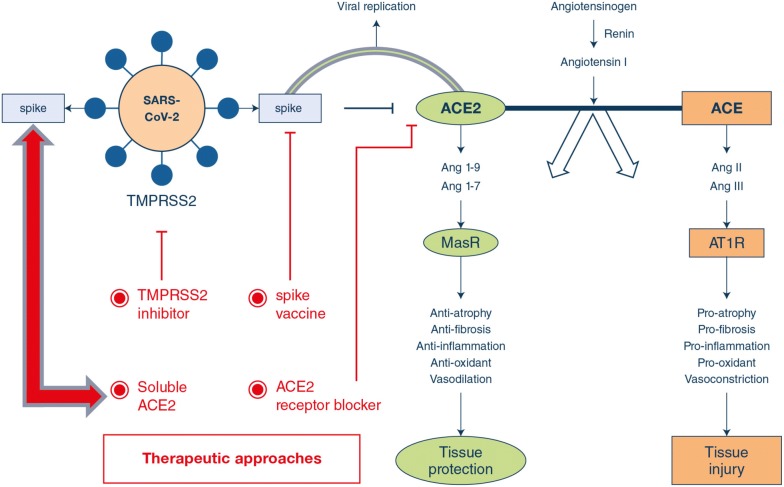Fig. 1.
Potential approaches to address ACE2-mediated COVID-19 following SARS-CoV-2 infection. The finding that SARS-CoV-2 and SARS-CoV use the ACE2 receptor for cell entry has important implications for understanding SARS-CoV-2 transmissibility and pathogenesis. SARS-CoV and likely SARS-CoV-2 lead to downregulation of the ACE2 receptor, but not ACE, through binding of the spike protein with ACE2. This leads to viral entry and replication, as well as severe lung injury. Potential therapeutic approaches include a SARS-CoV-2 spike protein-based vaccine; a transmembrane protease serine 2 (TMPRSS2) inhibitor to block the priming of the spike protein; blocking the surface ACE2 receptor by using anti-ACE2 antibody or peptides; and a soluble form of ACE2 which should slow viral entry into cells through competitively binding with SARS-CoV-2 and hence decrease viral spread as well as protecting the lung from injury through its unique enzymatic function. MasR—mitochondrial assembly receptor, AT1R—Ang II type 1 receptor

